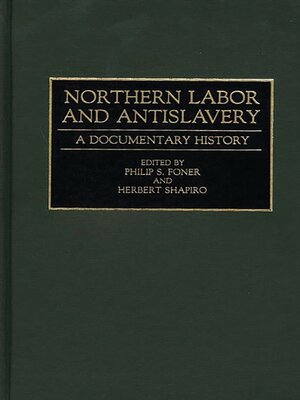Northern Labor and Antislavery
ebook ∣ A Documentary History · Contributions in American History
By Philip S. Foner

Sign up to save your library
With an OverDrive account, you can save your favorite libraries for at-a-glance information about availability. Find out more about OverDrive accounts.
Find this title in Libby, the library reading app by OverDrive.



Search for a digital library with this title
Title found at these libraries:
| Library Name | Distance |
|---|---|
| Loading... |
Using documents drawn from newspapers, magazines, and books, this volume provides a documentary history of the relationships between labor and abolitionists from the early 1830s to the Civil War. It includes newspaper articles from mainstream dailies as well as from abolitionist journals and the labor press. The voices heard from include prominent abolitionist leaders, grass roots activists, representatives of the labor movement, land reformers, and utopian advocates of universal reform. The book shows labor's response to such critical episodes as the 1831 Nat Turner Revolt, the Kansas-Nebraska Act, John Brown's execution, and the election of Abraham Lincoln.
Themes covered include the contrast between wage labor and chattel slavery, the abolitionists' outreach to white labor, the views of reformers who held that a universal solution to the labor question took priority over abolition, the varying responses of labor activists to the slavery question, and labor's growing role in the 1850s as a constituent in an antislavery coalition. At the same time, the book notes the continued presence of racism and specific instances of friction between white and black workers, as in the explosive violence of the 1863 New York City Draft Riot.
Themes covered include the contrast between wage labor and chattel slavery, the abolitionists' outreach to white labor, the views of reformers who held that a universal solution to the labor question took priority over abolition, the varying responses of labor activists to the slavery question, and labor's growing role in the 1850s as a constituent in an antislavery coalition. At the same time, the book notes the continued presence of racism and specific instances of friction between white and black workers, as in the explosive violence of the 1863 New York City Draft Riot.







